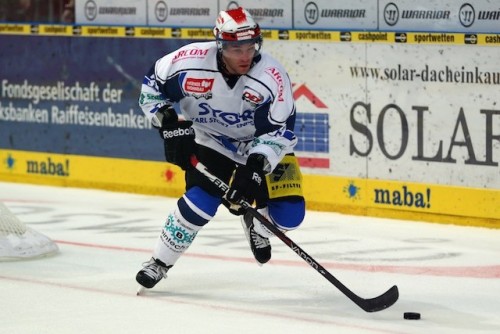Advertising on Jerseys, a Rebuttal

Sports fans, whether they like basketball, baseball, football, racing, or, more pertinent to us, hockey, will all agree on one thing. Few things are more sacred than their sport. Current fans of any given sport have a pretty good idea of how the game works, and while most of them will have their own tweaks, their professional sports watching experience is essentially perfect. If you need any proof, look at the arguments that come up almost every year surrounding the “slowing of the game” by using expanded replays, in hockey and in football.
Shaking things up is the unofficial announcement that the NHL has switched jersey sponsors from Reebok to Adidas, possibly opening up the reality of advertising on the jerseys our adored gladiators wear as they do battle. Some may think of it as putting an Exxon tramp-stamp on Maximus as he is about to show everyone up in the Colosseum, but I see it a different way – hold your hate ’til the argument is through.
North America, in particular, the United States, may be perceived by the rest of the world as an entertainment heaven; after all, it is home to Hollywood, New York, you name it. There is very little difference when it comes to the perception of sport in the USA; if the USA isn’t crushing it (and, to a lesser degree, Canada), it’s not getting any traction (looking at you, soccer). Look at the hype come Olympic time; a surefire way to anger an American (while losing some money) is to bet them that they will not be on top in the medal count. Hell, Michael Phelps alone has earned more medals than a lot of other countries nobody can even point out on a map. This is because there is such a large emphasis on sport in North America. That’s not to say that there isn’t elsewhere in the world, but the point is that the USA is obsessed with sport, a point that will come back around.
Because of the pedestal that sport is placed upon worldwide, it is an easy way for corporate sponsors to squeeze some cash out of it. Most notably, the much-despised European hockey jerseys, that look like a NASCAR vehicle, thoroughly littered with advertisements. In a sport that is as expensive as hockey, having a little extra cash to finance contracts, arena maintenance, and other miscellaneous things is never a bad thing. While revenues can account for a certain percentage, as well as merchandising revenue, nothing is more lucrative than a corporate sponsor. Think about it; with merchandise sales, the team only gets a slice of the pie, as some of it has to go to the manufacturer, the retailer gets a cut, and of course, the league gets their share (putting it simply; it’s much more complex than that, of course). With ticket revenue, the arena workers get their wages paid for, maintenance, and bills to keep the lights on and the zambonis running, plus players wages, etc. Naturally, owners get a bigger slice of the pie, as they fronted the money to make the team happening, and are also the first to respond in case of a windfall financially; so having someone pay to put a logo on your jersey means that any potential windfall gets covered.
Whether it means more money in the owners’ pockets (the likely, more cynical scenario I’ve seen in the comments), or whether it lessens the blow to how expensive tickets can be, advertising in jerseys is sure to increase revenue in the NHL, meaning that fringe markets with smaller but dedicated fan bases don’t have to constantly worry about relocation; strengthening the perception of the league in terms of stability.
The admirable trait of North American sports in general is that, in the Big 4 (NHL, NBA, NFL, MLB), there is no such thing as advertising on jerseys. It only goes as far as naming rights and gigantic panels plastered at the home arenas advertising one thing or another. In today’s weaker economy, it is a magnificent time capsule of days gone by around the world, where a person could tell who their team was based on a logo, and not the corporate sponsor in the front (Red Shirt + giant Chevrolet logo = Manchester United). The truth be told, it is a trend that, like many other fashion trends, found their origin in Europe and spread across the world. No sport in Europe is free from advertising in their jerseys, and advertising in the NHL is definitely a foot in the door for advertisers to get their logos integrated in your favorite sports team; they’ve already done it to your arenas, and even some teams (in the minors, no less, but still) are corporate playthings. With the financially weaker of the big 4 sports possibly giving way to this reality to occur, it’s only a matter of time before the trend spreads.
Fortunately, for the time being, this debate can rage on in a hypothetical battleground, as the reality of advertising on jerseys remains nothing more than a rumor with increasing traction. The hilarity of owning several jerseys belonging to the same team and knowing roughly which year they’re from based on the corporate sponsor is just something that only soccer fans enjoy for the time being. In the end, the product on the ice will remain unchanged, regardless of how much of an eyesore the jerseys can be. People still tuned in to last season’s all-star game after all, didn’t they?


